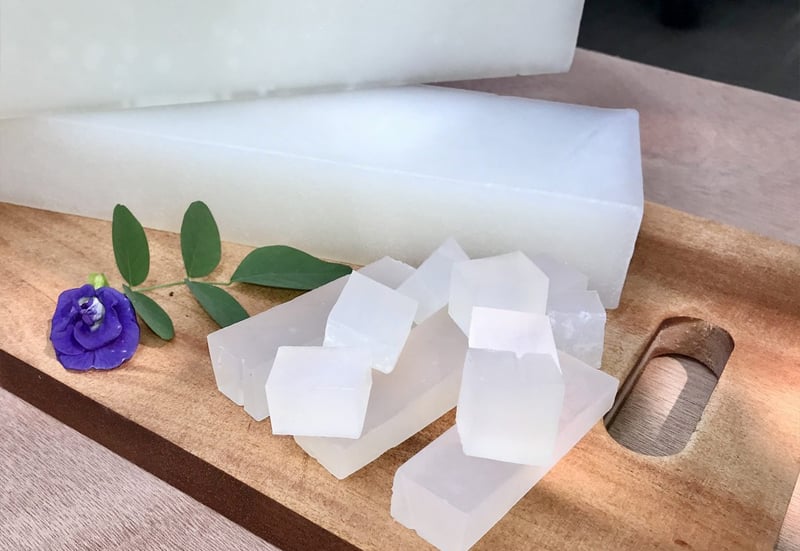How to make safe organic soap base at home
14/08/2023

What is Glycerin soap base?
Glycerin soap is a special type of soap produced through the saponification process of oils, followed by separating glycerin from the resulting mixture. Glycerin, also known as glycerol, is a moisturizing and emollient substance commonly used in the cosmetics, personal care, and pharmaceutical industries.

The production process of glycerin soap begins by using a source of vegetable or animal oils and conducting the saponification process. During the saponification process, the oil reacts with an alkali substance (either sodium hydroxide or potassium hydroxide), resulting in soap and glycerin as byproducts. The soap contains a certain amount of glycerin, depending on the specific production process.
How to make Glycerin base soap from coconut oil?
To make soap base at home, you need to prepare the necessary ingredients as follows:
- Beeswax
- Coconut oil
- Distilled water
- PEG 40
- Allantoin
- Acnacidol (can be replaced with another active ingredient)
How to make coconut oil soap at home
Step 1: Melt the wax at a low temperature so that it just dissolves, avoiding high heat as it can create bubbles. Add nourishing oil components such as coconut oil to the mixture and stir well.

Step 2: Mix Allantoin into distilled water until dissolved, then add it to the pot while stirring well. Pouring Allantoin directly into the mixture will cause it to clump, affecting its aesthetic appeal.
Step 3: Turn off the heat, wait for the mixture to cool slightly, then add acnacidol (or another active ingredient of your choice), and fragrance last. Note: the last ingredients are prone to losing their effectiveness at high temperatures.
Note: Creating opaque soap is easy; just add a small amount of some oil-based ingredient (base oil/essential oil, etc.), a very small proportion, and the mixture becomes opaque. So, if you want to combine transparent handmade soap with essential oils, you need to emulsify the essential oils with PEG 40.
Step 4: Pour the soap into the mold.
Note, let the mixture cool for a few minutes (5-10 minutes), then pour it into the mold. Note that if using ceramic or aluminum molds, you should line them with wax paper for easy removal. Alternatively, you can buy silicone molds for easy demolding and achieving the desired soap shape.
Advantages of using homemade organic soap
- Safe Natural Ingredients: Homemade organic soap is made from natural ingredients such as organic coconut oil and natural essential oils, avoiding potentially harmful chemicals found in some commercial soaps.
- Free of Harmful Chemicals: Many commercial soaps may contain harmful chemicals such as parabens, synthetic fragrances, and sulfates. Homemade organic soap eliminates these chemicals.
- Gentle on the Skin: Homemade soap made from organic coconut oil and natural essential oils is often gentle and less drying compared to some commercial soaps.
- Economical Solution: With low production costs and easy-to-find natural ingredients, homemade organic soap can be more cost-effective than using industrial soaps.
Remember, these steps are just a basic guide, and you can customize the ingredients and proportions to create soap with the desired quality and color.


